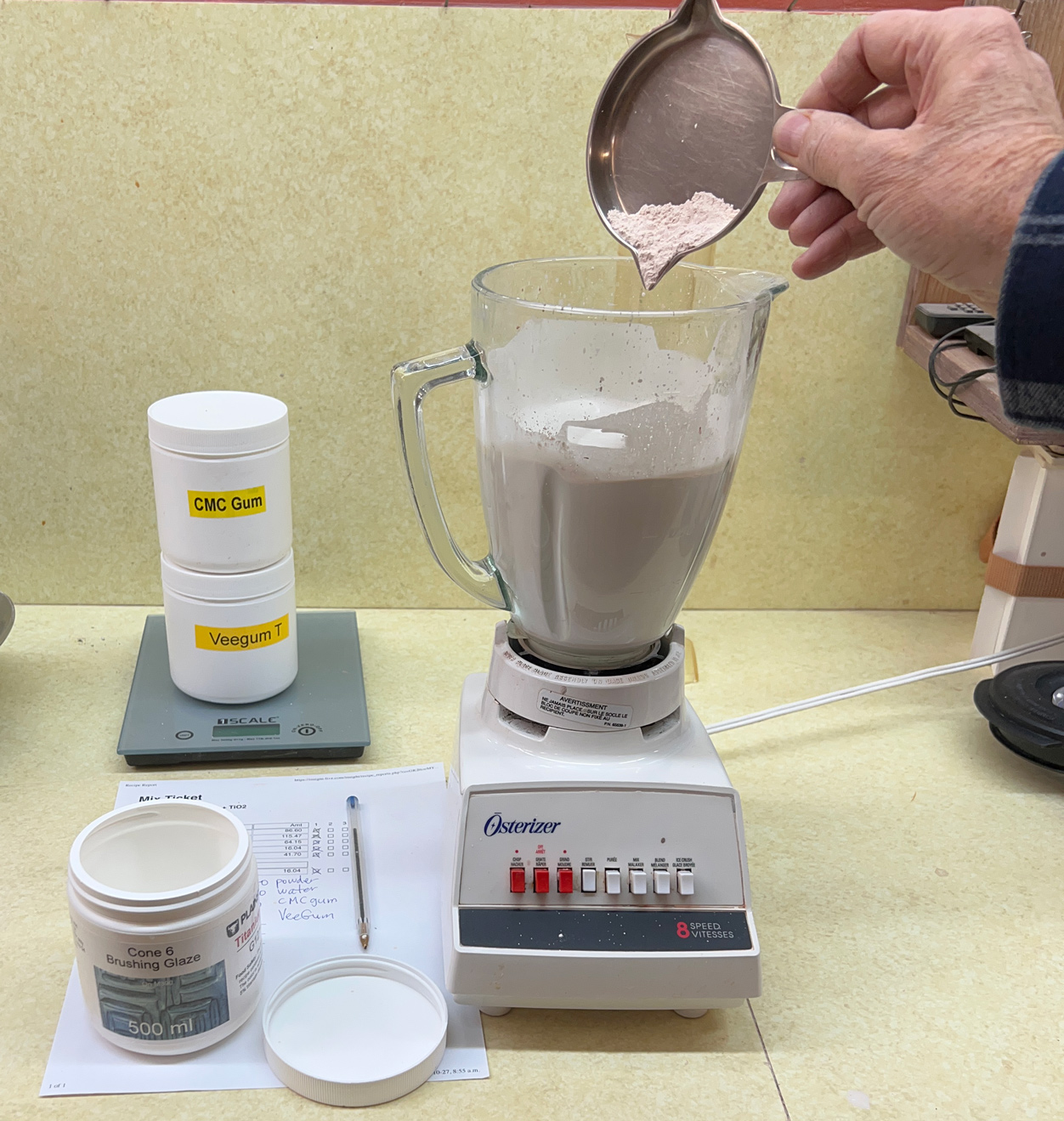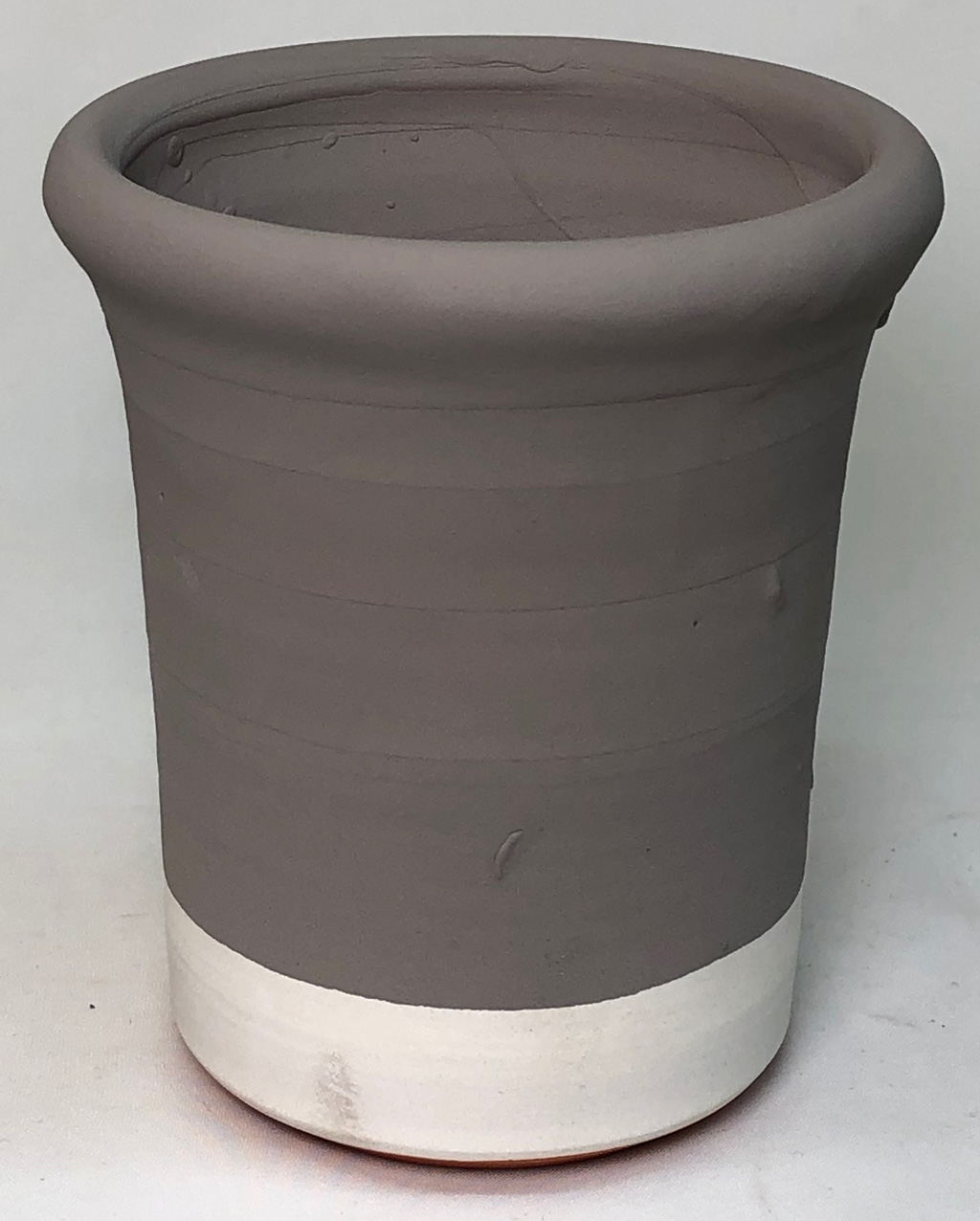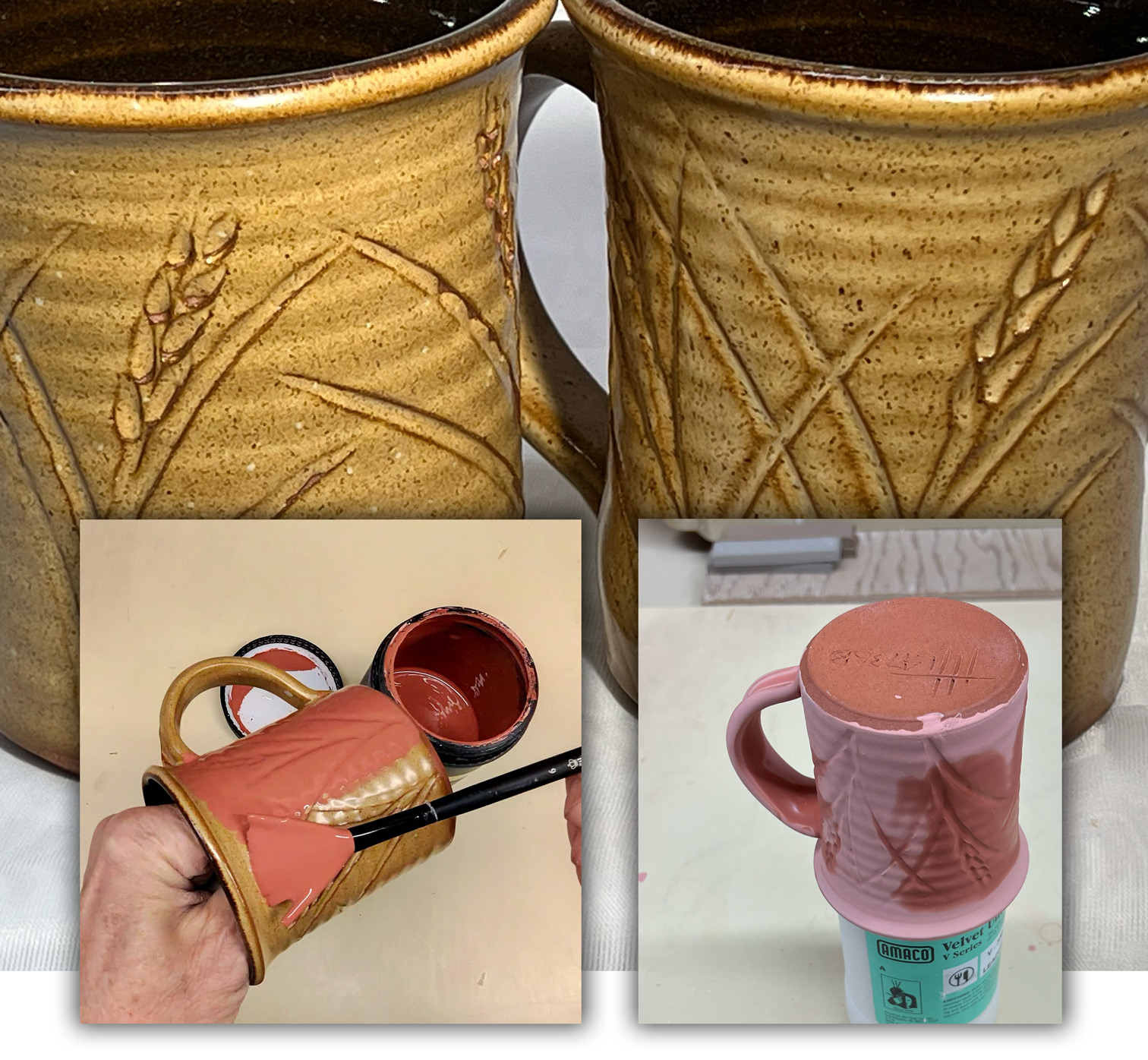| Monthly Tech-Tip | No tracking! No ads! |
Paint another layer onto a fired glaze? Yes. With CMC gum.
The cone 6 mug on the left has the G3933A glaze, applied as a dipping glaze. It turned out poorly - crawling from corners and looking thin and washed out. I made a brushing glaze version of this (which adds 1.5% CMC gum), I keep it around for this very purpose. It has a high specific gravity (unlike commercial ones that have high water contents - they will run and go on too thin if you try this). Because of the gum it dries hard, there is no shrinkage or cracking. On a second firing, using the C6DHSC schedule again, (mug on the right) the surface is transformed - thicker, more vibrant color (being picked up from the underlying body).
Related Pictures
Control gel using Veegum, brushing properties with CMC gum

This picture has its own page with more detail, click here to see it.
This is G1214Z1 brushing glaze (with 5% titanium added). For a 340g powder batch (to get a pint) my initial target is 5g CMC gum and 5g Veegum. CMC controls drying speed and Veegum the amount of gelling. I first mix the CMC with the powder and shake the whole batch in a plastic bag. Then I add it all to 440g of water in the blender jar and mix it well (making sure no agglomerates remain (stage 1). Stage 2 is adding the VeeGum slowly, while high-speed blender-mixing, this is important because it enables tuning the degree of gel (which cannot be predicted). Because this recipe has little clay, it took all 5g of Veegum without overgelling (the entire mass moved freely in the mixer jar). But it did gel overnight (so 4g would be better next time). By contrast, it is the brushing behavior that demonstrates whether the amount of CMC is right. Not enough and coats dry too fast and go on too thick. Too much and it dries too slowly and too many coats are needed.
Six layers, 85% Alberta Slip in the glaze, yet no cracking. How? CMC gum.

This picture has its own page with more detail, click here to see it.
Six layers of any normal dipping glaze would be impossible (flaking usually starts with the second). Yet this slurry is 85% plastic clay, it shrinks so much that it would be like a "dried-up lake bed" on the first layer. By the second it would all just fall off! How was it possible to dip six layers of this with no cracking? A 1% CMC gum addition added enough adhesive power to not only stick it on better but also counteract the drying shrinkage! Of course, there is a downside: A drying period is needed between each layer, the time depends on the porosity and wall thickness of the ware and the amount of gum. This also demonstrates the difference between the function of Veegum (and similar materials) with CMC. The former, if added to this recipe, would gel the slurry, require more water and increase the shrinkage, making the cracking much worse. We typically use a mix of calcine:raw Alberta Slip to control drying shrinkage enough to enable crack-free application for one coat (without CMC). But, as a first coat dipping glaze, a CMC addition is required.
Videos
Links
| Materials |
CMC Gum
CMC gum is indispensable for many types of ceramic glazes. It is a glue and is mainly used to slow drying and improve adhesion and dry hardness. |
Got a Question?
Buy me a coffee and we can talk

https://backup.digitalfire.com, All Rights Reserved
Privacy Policy

